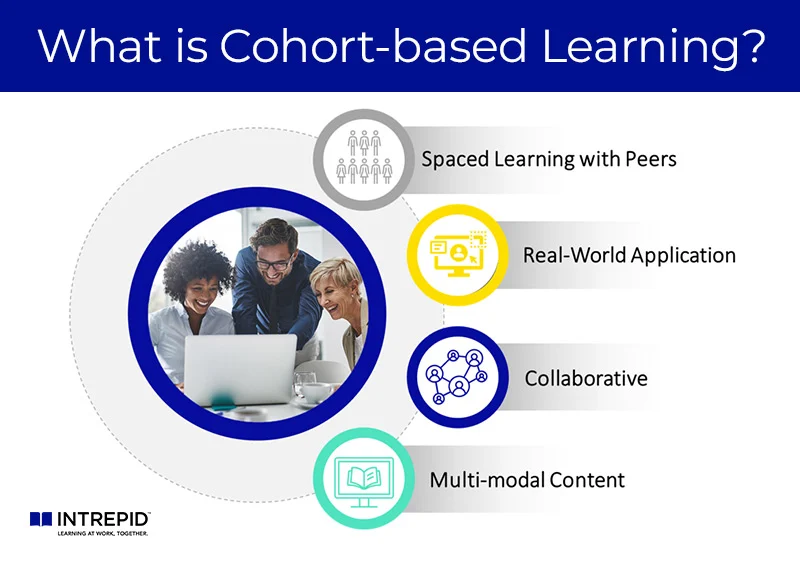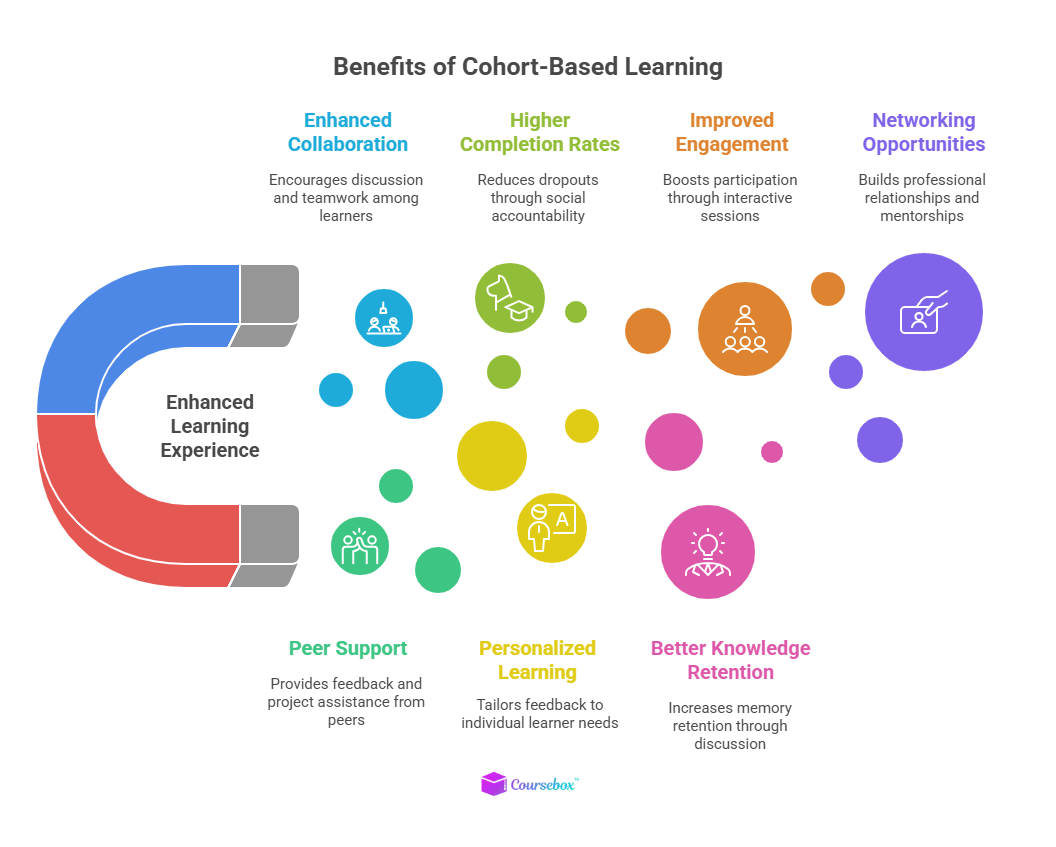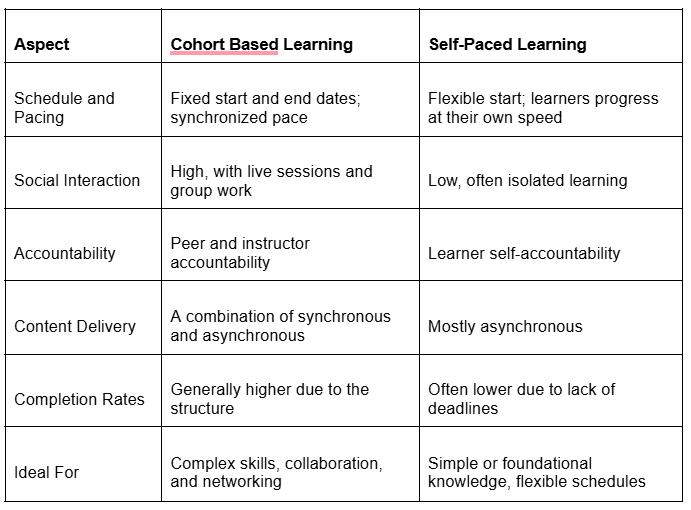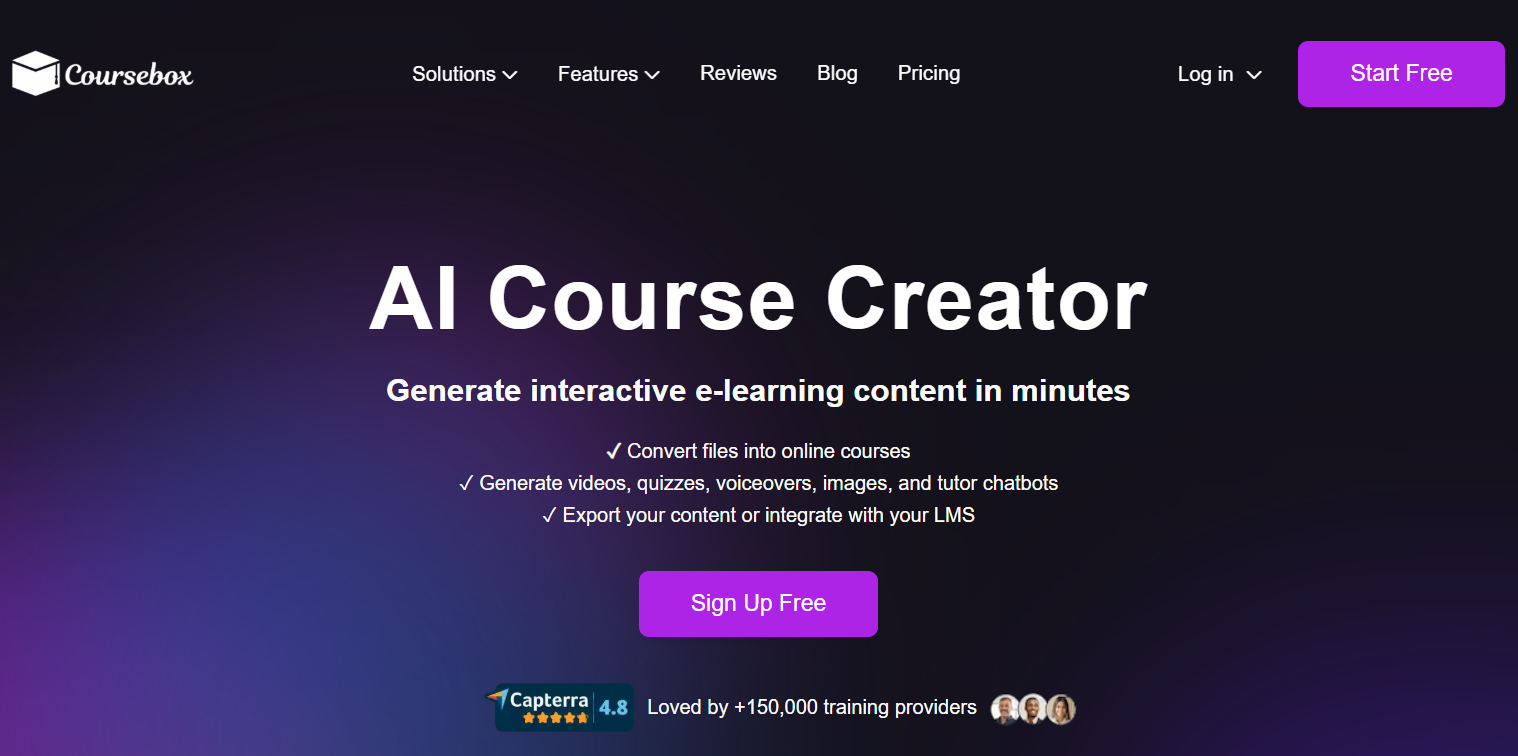What is Cohort Based Learning? Benefits, Examples & More
Cohort based learning fosters a collaborative environment where learners complete the course together. Explore how it differs from traditional methods.
Cohort based learning fosters a collaborative environment where learners complete the course together. Explore how it differs from traditional methods.

Cohort based learning is now widely adopted across industries for its ability to support blended learning environments. Whether you take an educational institution or a workplace, you will see people collaborating, learning, and working in teams. That’s what cohort learning is all about.
Unlike traditional self-paced courses where learners study in isolation, cohort learning groups students to move through the curriculum together on a fixed schedule. This shared approach fosters connection, motivation, and a sense of community, all of which have been shown to improve learning outcomes and satisfaction.
Even statistics found cohort based learning to be more effective than traditional methods. An experiment found the dropout rate for MOOCs (Massive Open Online Courses) to be over 90%. On the other hand, cohort based courses have a completion rate of 90%, according to Learnopoly.
Let’s explore what cohort based learning is, its benefits, practical examples, and how it differs from self-paced learning.

Cohort based learning is a structured educational model where participants start and complete a course as part of a group or “cohort.” Instead of progressing individually at their own pace, learners share a common timeline and experience live sessions, assignments, and discussions.
This approach cultivates a strong sense of belonging and accountability because members collaborate regularly, provide feedback to each other, and learn from diverse perspectives.
Unlike purely self-paced courses, cohorts revolve around synchronous engagement alongside asynchronous content. This combines flexibility with social interaction.
In the cohort method, the learning formats vary widely. While some opt for fully online cohorts with weekly live webinars, others prefer blended experiences that combine virtual and in-person elements. The choice depends on your learning goals and expectations.

Cohort based learning offers multiple advantages that enhance both learner experience and educational outcomes. The common ones include:
Learning within a group encourages knowledge sharing, lively discussions, and mutual encouragement.
Peer feedback and group projects deepen understanding and make learning more dynamic.
The social accountability that comes from regular check-ins and deadlines within the cohorts reduces dropout rates. Learners feel motivated not just for themselves but for their peers.
Cohorts often comprise smaller, manageable groups, enabling instructors to identify individual learner needs and provide tailored guidance and support.
Interactive elements such as live Q&A sessions, breakout discussions, and collaborative assignments keep learners actively involved.
When you collaborate on a question and discuss it with your team members, there is a 69% chance you will remember it for longer. Typically, you remember 28% of learned topics after two days. That makes cohort based learning 41% more efficient for memory retention, as stated by Learnopoly.
Cohorts create communities that often extend beyond the course itself. Learners develop professional networks that can lead to collaboration, mentorship, and career opportunities.
Let’s understand how cohort based learning comes to life with some real-world examples.
Suppose you run a tech company and want to motivate your workforce to upskill. You can organize an 8-week leadership skills bootcamp where employees advance through modules as a cohort. They participate in weekly live workshops, tackle group projects, and engage in peer coaching sessions.
Another example could be of a university arranging a bootcamp for its data science students. The students can enroll in a cohort based 12-week program that combines recorded lectures with scheduled live sessions, team-based projects, and virtual office hours with instructors.
In fact, cohort based learning can also be used in online courses. For instance, a writing course for new authors or a cooking course for aspiring chefs can run in cohorts, featuring weekly live critique workshops, discussion forums, and collaborative exercises where learners give and receive feedback in real time.
To choose the right model for your learners, you must understand how cohort based learning differs from self-paced learning. Here is a quick comparison between the two:

In cohort based learning, learners start and finish the course together, following a fixed schedule with clear milestones and deadlines. This structure creates a guided pathway where learners move synchronously through modules. Moreover, scheduled live sessions, group assignments, and real-time discussions keep learners engaged and accountable for their progress.
Meanwhile, self-paced learning offers complete freedom in timing, meaning learners decide when to start, pause, and finish the course. The content is divided into standalone modules that can be accessed and completed in any order. While that’s convenient, many learners often fall into procrastination and become less motivated to complete the course due to a lack of accountability.

Cohort based learning is inherently social. Learners engage in group projects, peer discussions, and feedback loops that foster an interactive learning community.
On the other hand, self-paced learners often study alone with minimal or optional social interaction. While some platforms offer discussion forums or chat rooms, participation is voluntary and usually asynchronous. This format may result in feelings of isolation and less dynamic knowledge exchange.
Cohort learners benefit from both peer and instructor accountability. Fixed deadlines and group commitments create external pressure to stay on track, which many find motivating. Also, the sense of community and shared goals reduces dropout risk and fosters persistent effort.
Self-paced learners rely mostly on internal motivation and self-regulation. While some use digital tools like progress trackers, badges, or reminders, the lack of social accountability can lead to inconsistent study habits and a higher potential for delayed or incomplete learning.
In cohort models, content is usually designed sequentially, with each module building upon the previous one. It also includes live instructor sessions to enable immediate clarification and adaptive pacing depending on learner feedback.
Self-paced courses focus on modular, often standalone content that learners can consume independently. This allows skipping or revisiting specific topics as needed. Since there is no live interaction, instructional materials tend to be more self-explanatory, including videos, readings, quizzes, and automated feedback.
Platforms like Coursebox provide the essential technology foundation for trainers and educators to create cohort courses. It comes with many AI-powered features that support different elements of cohort based learning.
For instance, Coursebox allows training providers to easily set up live webinars, workshops, or Q&A sessions to keep cohorts connected and engaged in real time. It also encourages ongoing peer interaction through forums, chat groups, and shared workspaces.
You can also leverage Coursebox’s AI chatbot to provide real-time support to your learners. It provides instant, personalized feedback through smart AI assistants, reducing friction and enhancing the learning experience.
Additionally, Coursebox’s intelligent course builder designs learning paths that align content delivery with cohort schedules, balancing live and self-study components perfectly. It also integrates seamlessly with LMS and various organizational tools to provide consistent learning experiences.

Ready to explore how cohort based learning can revolutionize your training programs? Sign up for free now and let Coursebox help you get started.
Cohort based learning is a structured educational approach where learners start and progress through a course together on a shared schedule. It includes live classes, group discussions, and collaborative assignments that build a sense of community and accountability. This model combines synchronous and asynchronous learning to foster interaction, motivation, and better outcomes.
Cohort learning offers enhanced peer interaction, higher completion rates, and better networking opportunities. Learners benefit from regular deadlines, live feedback, and collaborative projects that deepen understanding. These advantages make cohort learning effective for complex subjects and skill-building.
Cohort learning is ideal for learners who thrive in social environments and benefit from structured schedules with clear milestones. It suits professional development, leadership training, and collaborative skill-building where interaction enhances learning. However, learners with irregular schedules or a preference for independence might find self-paced formats more flexible.
In cohort learning, motivation is often driven by peer support and shared deadlines, which create external accountability. Learners feel responsible to their cohort, instructors, and themselves, which leads to higher engagement. Self-paced learners rely heavily on internal motivation and self-discipline, which can be challenging without fixed timelines or peer interaction.
Yes, platforms like Coursebox offer robust features tailored for cohort learning, including live session scheduling, collaborative discussion boards, and AI-powered real-time learner support through chatbots. Its intelligent course builder sequences content suited to cohort pacing and facilitates group assignments seamlessly. This makes creating engaging, interactive cohort courses easier for trainers and more rewarding for learners.
